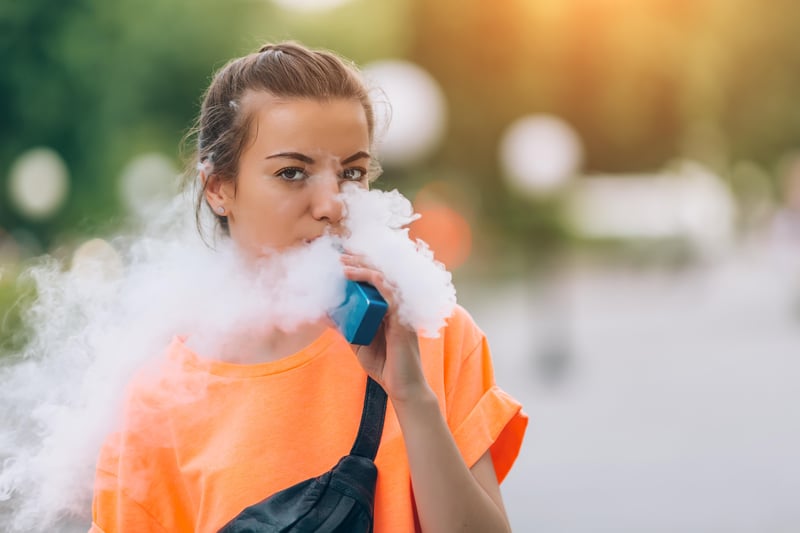Get Healthy!

- Sydney Murphy
- Posted August 31, 2022
'Healthier' Option? Fit Teens Are More Likely to Vape
It might seem incongruous, but new research suggests that teens who engage in more physical activity may vape more frequently than their less active peers.
In the study, high schoolers who reported being physically active had a higher risk of using vaping products than their peers who were active just one day a week or less. When compared to their less active peers, teens who reported engaging in at least 60 minutes of physical activity four to five days per week were 23% more likely to use a vaping product. Teenagers were 11% more likely to use such products if they reported being active two to three days per week.
The new study by University of Georgia (UGA) researchers, published online recently in the journal Tobacco Use Insights, is the first in the United States to link electronic cigarette use to physical activity levels among high school students.
"Our youth who tend to be on the healthy spectrum for physical health have heightened risk of using electronic vapor products. This may be because vape is perceived to be a healthier option to traditional smoking,"said study lead author Janani Rajbhandari-Thapa, an associate professor in UGA's College of Public Health.
"Marketing campaigns have marketed vapes as a healthier option to traditional cigarettes, but data shows that additives in vape products were linked to e-cigarette, or vaping, product use-associated lung injury,"she added in a university news release.
"If adolescents are thinking vapes are a better option to traditional cigarettes, that is a big problem,"Rajbhandari-Thapa said.
While the finding seems counterintuitive, participation in sports and alcohol abuse are also linked, the study showed. Teenagers on sports teams may experience peer pressure to drink alcohol to celebrate victories and strengthen team bonds. They also could have more extensive social networks than teens who don't participate, which could make them more susceptible to peer pressure to engage in risky behaviors, she suggested.
Some teenage vapers mistakenly think they're just inhaling water vapor with nicotine and a few minor additives, but that "water vapor"can contain other chemicals besides nicotine. This includes benzene, which is found in car exhaust.
The U.S. Centers for Disease Control and Prevention notes that nicotine concentrations in vape products can vary greatly, but e-cigarettes may contain more of the drug than traditional cigarettes do. Vapes are a common choice for young people because they are frequently less expensive, don't smell like tobacco, and can often be used in locations where tobacco products are prohibited.
"We have to make parents more aware that vaping is not OK,"Rajbhandari-Thapa said. "If I take my public health expertise off the table, as a parent, I may be thinking, 'Well, my child isn't smoking. It's OK that he's vaping.' But that's not the case. We have evidence of how harmful vaping is."
Prior studies, presented by the Georgia Department of Public Health, have demonstrated that e-cigarettes can result in a number of risky medical conditions, such as vape-associated illness, a potentially fatal condition that causes severe respiratory symptoms.
For the new study, the researchers relied on data from the 2018 Georgia Student Health Survey, which includes responses from more than 362,000 Georgia high school students at 439 schools across the state.
More than 10% of the students said they had used an electronic vapor product like an e-cigarette, e-pipe, vaping pen, or hookah pen at least once in the last month. A further 4% admitted to using both traditional cigarettes and vape products. Only 1% reported using only traditional tobacco products.
Students in higher grades reported using both traditional tobacco products and e-cigarettes at higher rates than students in lower grades, and male students were more likely to smoke cigarettes or use e-cigarettes than female students.
"I would like this finding to inform our state legislators specifically to address risky substance use behaviors by adolescents in our state,"Rajbhandari-Thapa said. "Limiting vape use by limiting marketing, not allowing vape use around schools and implementing school-level policies to discourage vape use -- we want our research to inform those policies because vaping is a threat among high school students."
More information
The U.S. Surgeon General offers more facts on e-cigarette use among youth and young adults.
SOURCE: University of Georgia, news release, Aug. 30, 2022





